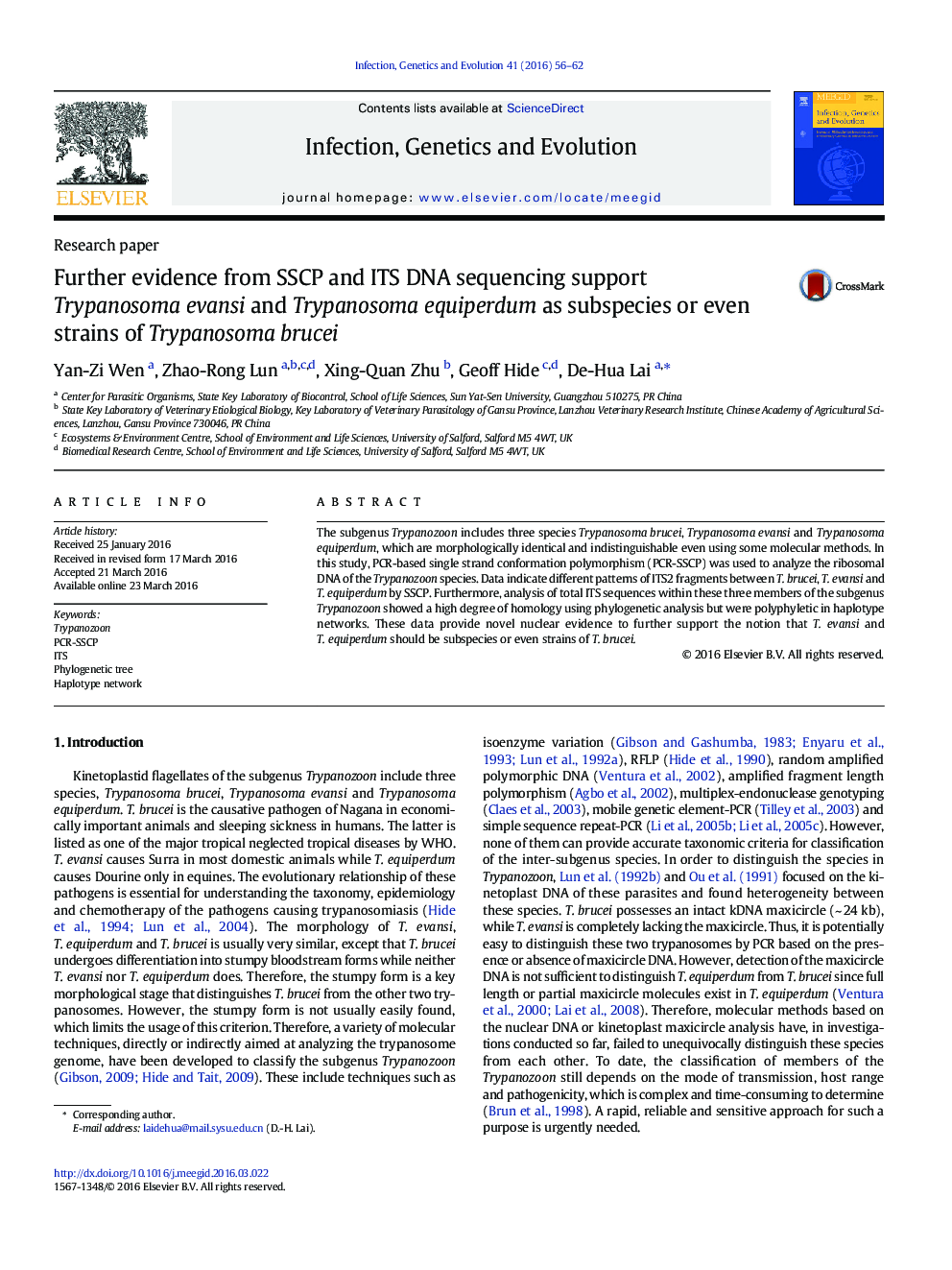| Article ID | Journal | Published Year | Pages | File Type |
|---|---|---|---|---|
| 2822897 | Infection, Genetics and Evolution | 2016 | 7 Pages |
•PCR-based single strand conformation polymorphism reveals limited polymorphism among Trypanozoon species.•Sequences of ITS and 28S rDNA support the notion that T. evansi and T. equiperdum should be subspecies of T. brucei.•Haplotype networks indicate two major subpopulations in Chinese Trypanosoma evansi.
The subgenus Trypanozoon includes three species Trypanosoma brucei, Trypanosoma evansi and Trypanosoma equiperdum, which are morphologically identical and indistinguishable even using some molecular methods. In this study, PCR-based single strand conformation polymorphism (PCR-SSCP) was used to analyze the ribosomal DNA of the Trypanozoon species. Data indicate different patterns of ITS2 fragments between T. brucei, T. evansi and T. equiperdum by SSCP. Furthermore, analysis of total ITS sequences within these three members of the subgenus Trypanozoon showed a high degree of homology using phylogenetic analysis but were polyphyletic in haplotype networks. These data provide novel nuclear evidence to further support the notion that T. evansi and T. equiperdum should be subspecies or even strains of T. brucei.
